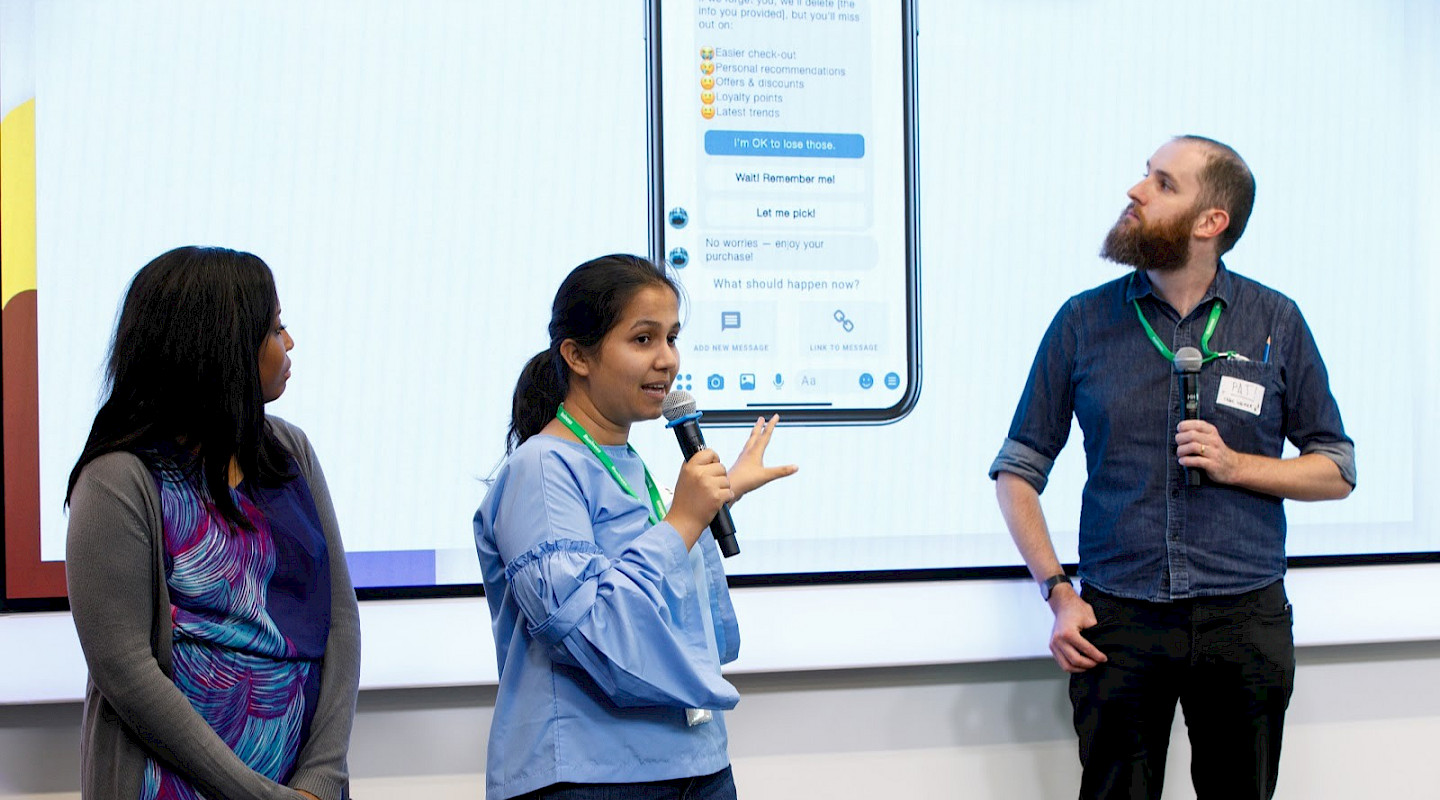How might we...
... streamline a conversational transaction, while leaving people in control of the information they share with that merchant?
We can use affordances available in chat platforms to provide a more controllable guest check-out experience in a conversational commerce platform.

Jumper participated in the TTC Labs Data Innovation Program, which was part of the first season of Startup Station Singapore in partnership with IMDA.
Jumper is a conversational commerce platform, allowing online merchants to sell through the messaging and social channels on which they’re already active.
In order to facilitate these transactions, Jumper collects a customer’s order preference (e.g. size or colour) and delivery address, which are passed on to the merchant selling the item. The payment itself is managed by third-party payment processors.

Without the affordances of a “traditional” e-commerce UI, shopping through a chat platform presents a UX challenge — especially if the customer needs to create an account as part of the transaction.
How might we...
... streamline a conversational transaction, while leaving people in control of the information they share with that merchant?

Team Jumper presents their prototype
After someone has given the information required for an order to be processed, a Jumper-powered retailer has everything in hand that it needs to create an account for that person.
Instead of taking the usual approach and saving everything at once, it could offer a customer options around what they’d like to save for their next purchase
This approach allows people to adjust the information saved to account for their own individual sensitivities. For example, if they’d prefer not to store their delivery address or payment method with the merchant, then they can easily select that option.

As more of our online interactions and transactions move into chat and messaging platforms, the need to create a broader range of experiences that hand control and autonomy to people using these platforms will only become more urgent.
How might we build on this prototype to offer more and better ways for people to stay in control of what they’ve shared, and with who, when interacting on conversational platforms?
